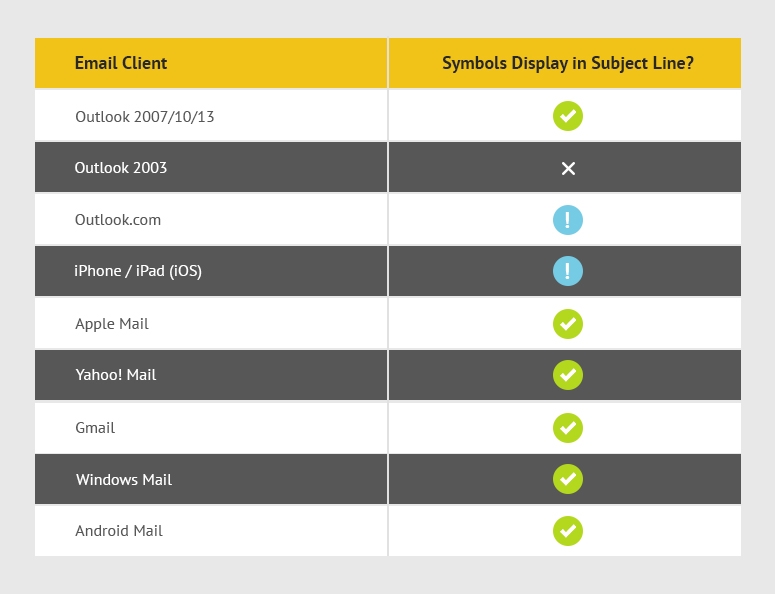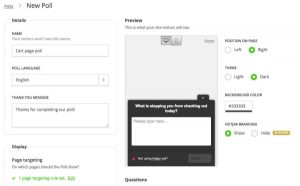— December 5, 2017
How convenient it is to express yourself through emojis! Chatting has caused an increase in the use of emojis, and now we find ourselves in love with the idea of emojis everywhere. Why then should we avoid using emojis in email subject lines?
A smiley emoji can convey that the mail is something to be happy about, and can just about increase the open rates for you. Emojis can express the content in the email in a better way, and attract the right set of audience. That’s why marketers are trying to fit in emojis strategically and creatively into the email subject lines.
The use of emojis in mobile & email marketing messages has increased by over 775% YOY.
Having said this, we need to unearth the benefits of using emojis in your subject lines, and how it would actually affect your email marketing goals.
There are obvious pros and cons associated with emojis in emails. Though marketers claim that it does improve open rates, if used too many times, can even ruin your marketing strategy. You should thus know when, why and how to use emojis when working on your subject line.
Let’s get started with the benefits of using emojis in your email subject line.
Advantages of Emojis in Email Subject Lines
- Attracts subscribers & improves open rate: This is, without doubt, the first advantage of using emojis in the subject line. Imagine reading a subject line with a winking emoji at the end of it. Wouldn’t that make you smile, and want to know what the email holds up for you? Exciting and straightforward emojis can help you increase your email opens. 56% of brands using emoji in their email subject lines observed a higher unique open rate.
- Improves the brand’s visibility: When you include an emoji in your email subject line, regardless of the open or the relevance to the audience, they would remember your brand. You would be in their top recalls.
- Fits the mobile screen size: You simply cannot forget that your audience is present on the mobile device, and tend to open their mails on the mobile. You may want to ensure the subject lines are immediately visible when your subscriber opens the email on the phone. With a limit of 40 characters, the use of emojis can help you save a lot of characters, and be visible on the mobile devices at the same time.
- It is more expressive: When you have emojis in email subject line, it helps convey what you wish to express better. The right emoji not just captures the attention, but also carries the emotion connected with ease.
The Flip Side of Using Emojis
On the flip side, there are certain limitations that you might want to consider before using emojis in email subject lines.
- Opening emails on different OS: The first thing you want to make sure, when sending emails with emojis in the subject line, is that your subscribers are able to view it. The subscriber can open the email on a Windows XP client or on an Android phone. Emojis use a Unicode character, which is interpreted differently by different operating systems. Let’s have a look at how each OS reads an email with emoji in the subject line:
- When it comes to Windows XP or Windows 7 based devices, you will observe a very limited support extended towards emojis. Instead of the emoji communicating your emotion, you will find the subscriber staring into a ?. Windows 8 was the first ever Windows OS to support emojis. But, if you are reading your email on Windows 7, you will view the emojis in black & white frames. The colours are not interpreted by this OS.
- MacOS X extends full support to emojis. Again, Apple mobile OS, iOS has supported emojis since the version 4.0.
- Android, on the other hand, has extended support for emojis since version 4.1, but it wasn’t until Android Kitkat 4.4 that the emojis started appearing in colour.
- Rendering emojis on email clients: You need to take into account your subscribers’ email client when you are including emojis in the subject line. Different email clients render emojis differently, and some of them may not even render these emojis. So, which of the email clients may pose a problem for you? Gmail renders your emoji perfectly, irrespective of the OS you are using to access the email. Normally, the OS interprets the Unicode, but in case of Gmail, Google interprets the code.

- Emojis may not be fit for your brand: Emojis should be used if they fit your brand’s identity. A serious brand using fun emojis in the subject line can go against the brand identity and customer perception. You may want to identify whether emojis suit the emails you send and how best you can use them before doing so.
Best Practices for Emojis in Subject Lines
Choose your Emoji well
Choice of emoji depends on the content type, your business type, as well as the tone you are using in your content. If you are a serious business and wish to use emojis, you may want to find out emojis that are serious. A registered trademark symbol or the copyright symbol in the email subject line will convey what you want to say. It will also help you stand out.
Keep it contextual
Use an emoji that is relevant to the subject line. You don’t want to use an emoji that does not help convey what you are planning to say. With over 2000 emojis that cover a range of objects and emotions, you can always use them to communicate what cannot be said in words.
Express your emotions
Expressing feelings through text can be quite tricky. The emoticon emojis help clarify the emotion and help express better.
Create an impact
The simple text subject line would convey a particular idea but, if you wanted to create an impact, you should consider using emojis. They help emphasize the idea and attract the audience. Use them at the right places in the subject line.
Don’t send without testing
You may want to test the subject line before you send out the email. Ideally, see if the emojis are rendered in the different email clients. Try A/B testing with the subject line to get an idea of the number of clicks you might get.
Popular Emojis & Subject Lines
Here are the best and worst symbols you can use in your subject lines

Source: Econsultancy
The graph below shows the emojis that were mostly used in subject lines in the year 2017

Source: Mailchimp
Here are a few subject lines with emojis that graced our inbox during this holiday season:

Wrapping up
Emojis are an excellent way of communicating what you want to say with minimum characters. You can use emojis in place of words to express yourself. However, it goes without saying that you need to use one that fits your tone and business identity best.
Do you use emojis in your subject lines? We would love to know in the comments below how it has worked for you.
Digital & Social Articles on Business 2 Community
(109)
Report Post







